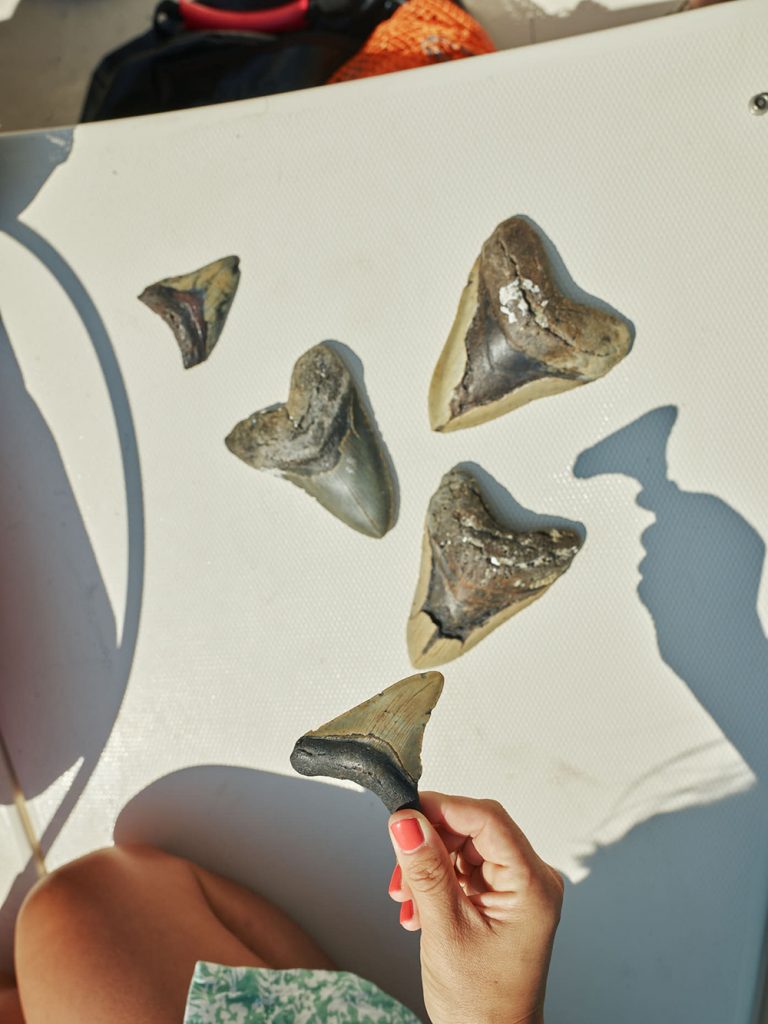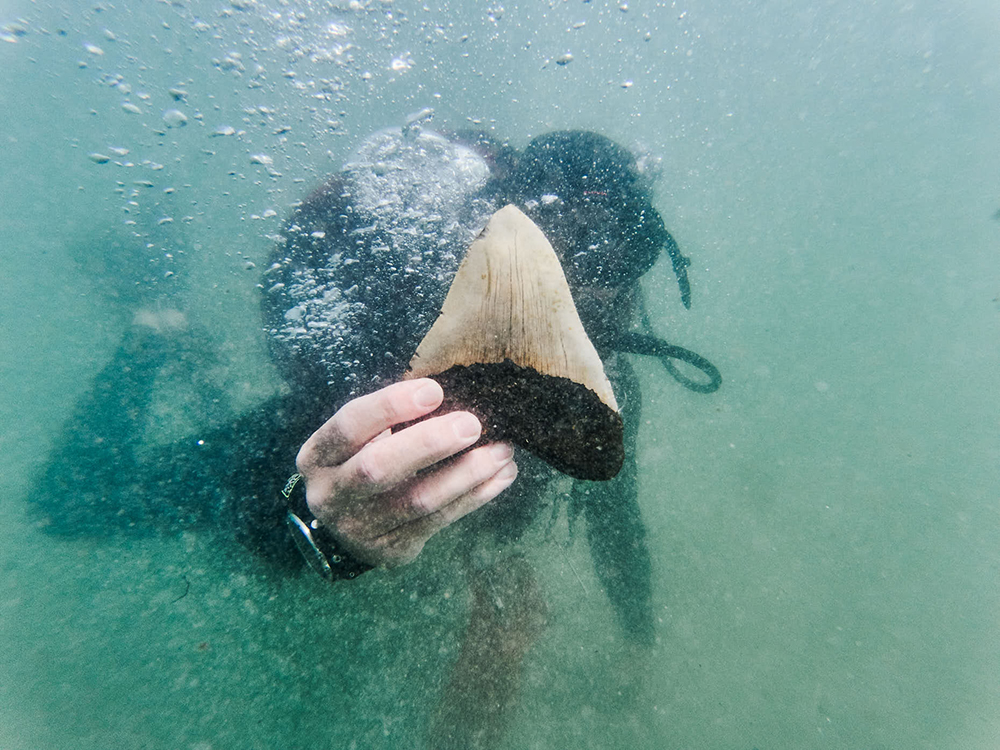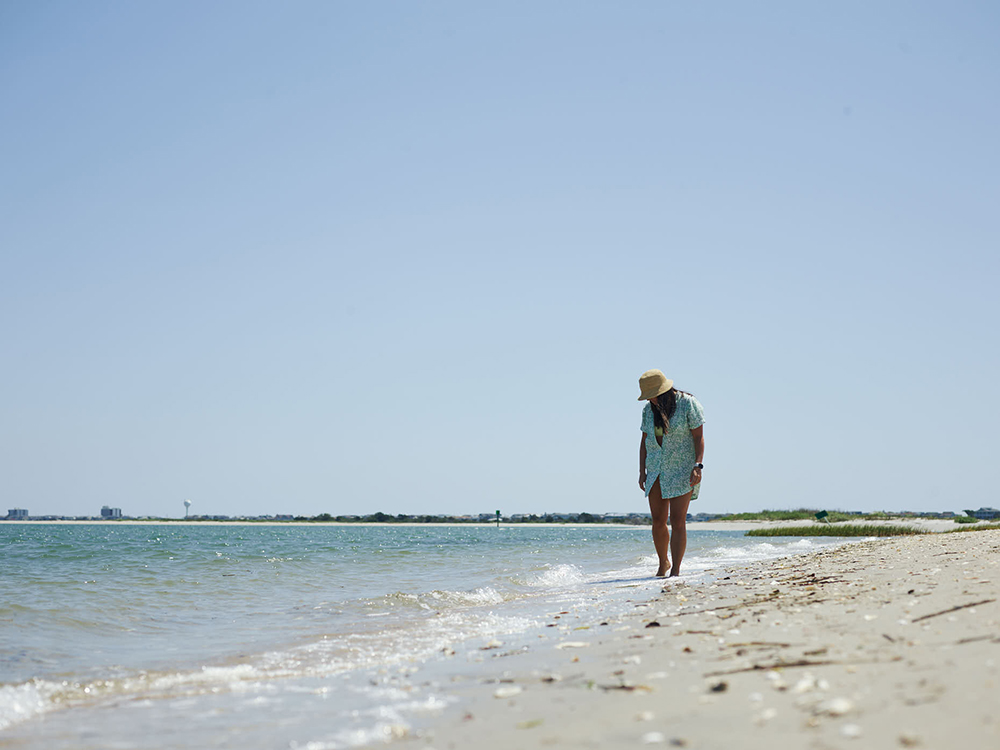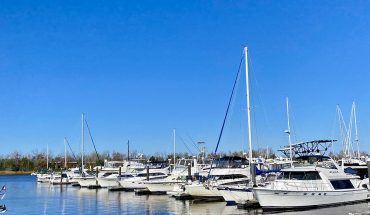According to our experts, Holden Beach, Ocean Isle and Topsail Island are among the best places to search for these unique fossils. Learn why.
by Emma Deal, Nelie Tahssili & Eliza Martin
According the the pros, our state is a particular hotspot for finding fossilized shark teeth. But some beaches have more than others. We spoke to scientists, fossil hunters and divers to learn where they’ve had the most luck.
Holden Beach
Everyone we interviewed said that Holden Beach, a waterfront town in Brunswick County, is one of the best spots to find shark teeth on shore. The east end of Holden Beach offers sandbars and tide pools to source for teeth during low tide. “They dredged last April and added sand to the beach, and the area they pulled from happened to be a Cretaceous pocket, which means it holds many different types of teeth,” says fossil collector Alisa Noah. With over 8 miles of sandy beaches, the island attracts many visitors on the hunt for shark teeth.
Ocean Isle Beach
Ocean Isle Beach has an abundance of shark teeth. Like Holden Beach, this island was produced by dredging, bringing sand containing fossils and shark teeth from the ocean floor to the surface. The beach is connected to the mainland by a modern bridge and has also been known to occasionally have megalodon teeth washed ashore. Dr. Ashley Oliphant, author of Shark Tooth Hunting on the Carolina Coast, says she finds one or two megalodon teeth per year here!

Onslow Beach
Onslow Beach is a favorite for finding shark teeth, but it’s part of Marine Corps Base Camp Lejeune, so it’s only accessible to current and former military personnel or their family members who have a military ID. (Those without military access can get to this beach if they are escorted by someone with a military ID, who can get them a temporary pass at the Camp Lejeune Visitors Center by the Wilson Boulevard Gate.) So while it can be a bit more difficult to get onto this beach, fewer people mean less competition for the best finds — this was a favorite from our pros for its many fossils.
Shark Tooth Island
This small island in the Cape Fear River is well-known for holding a large amount of shark teeth. Because the island was made from dredging sand, sediment and limestone rock, its fossils are close to the surface (along with other finds, like Native American artifacts, Revolutionary war items and sea glass). It’s accessible by kayak from River Road Park in Wilmington, or you can use a rental company such as Wrightsville Kayak Company, which offers curated tours all year.
Topsail Island
Topsail Island is a well-known place to look for shark teeth on shore. Local legend says that this island was named for merchants watching for the tops of pirate sails in the 18th century. Today, this 26-mile long barrier island is still a hot spot for treasure seekers looking for small fossilized shark teeth. According to Kathy Barnes, who has been collecting fossils with her friend Melinda Beard-Maloney for decades, this is the second-best beach in North Carolina for finding teeth. Megalodon teeth even wash up on shore occasionally.

Wrightsville Beach
Wrightsville Beach is the closest North Carolina beach to Raleigh, and a set of sandy ledges about two dozen miles offshore, nicknamed the Meg Ledge, have one of the highest concentrations of megalodon teeth in the world. To get to them, you’ll need a scuba diving license and a boat. Companies such as Carolina Beach Scuba and Wrightsville Beach Diving offer charters that experienced divers use to get to the ledges, where they’ll dive 100 meters below sea level to search for teeth.
Click here to learn tips for how to find shark teeth.
This article originally appeared in the July 2023 issue of WALTER magazine.






Pingback: From the Deep: Shark Teeth on the North Carolina Coast - WALTER Magazine